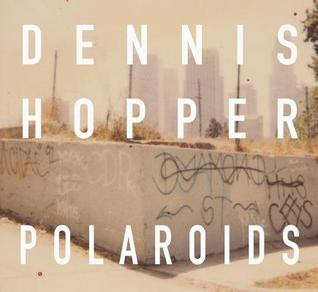Dennis Hopper "Colors, The Polaroids" Essay by Aaron Rose (Damiani)
 ISBN: 978-88-6208-476-5 DamianiDennis Hopper did many things. Known as an actor, filmmaker, artist, art collector, and photographer. His strongest fields for me, is his acting, photographs, and of course, his art collection. The two that stand out is his great sense of the eye for art and his understanding of that medium, whatever it's paintings, colleges or sculpture. He's also a fantastic photographer. The various books that have come out for the last ten or so years are all pretty good. He was always in the right place and time, and his camera/eyes recorded those moments magnificently.
ISBN: 978-88-6208-476-5 DamianiDennis Hopper did many things. Known as an actor, filmmaker, artist, art collector, and photographer. His strongest fields for me, is his acting, photographs, and of course, his art collection. The two that stand out is his great sense of the eye for art and his understanding of that medium, whatever it's paintings, colleges or sculpture. He's also a fantastic photographer. The various books that have come out for the last ten or so years are all pretty good. He was always in the right place and time, and his camera/eyes recorded those moments magnificently. I have lived in Los Angeles for the most of my life, and I have seen and lived among graffiti walls, side of buildings and sidewalks for my entire adult life. One thing that never goes away in Los Angeles is graffiti. I hate it. For one reason, I love architecture, and I like how walls and concrete look like just a wall or a piece of concrete. The naked texture of the side of a wall is something of beauty to me. When someone paints on it, or use it as a canvas, I feel I'm cheated of the original vision of that structure. Writing this, I know I'm someone in the minority who sees graffiti, both as art and message board, as something of an eyesore for me. There are exceptions, of course, but 98% of the graffiti around Los Angeles is pretty depressing. Dennis Hopper felt another way about it.
"Colors The Polaroids" more likely were Dennis' research material of his making for the film he was about to make called 'Colors." The story of two LAPD cops dueling with the local street gangs. In preparation, Hopper went through his neighborhood of Venice California and elsewhere to document various gang graffiti. On a sociology level, graffiti is fascinating. It's a coded language within a particular group, as well as a message for other gangs. The act of covering up one's graffiti and replacing it with their writing has been a practice for decades. There is that, but Hopper is also looking at the graffiti as works of art, or paintings. As much as I loathe graffiti, there is clearly an aesthetic going on. It is a craft if not always an art.
The Hopper book is interesting with the fact that he was recording these images for his film, but also a dual interest in it as painting. The way he photographs these walls - mostly shot closely and straight on, I can feel he loved the imagery of this world. Also that he used a Polaroid either means he wanted results right away and not wait for the images for a day or so (before digital photography of course), or he liked the instant playback and almost artless aspect of such a camera and its use. The truth is, the Polaroid is a highly aesthetic as well. It has its limitations, but that sometimes turns the artist onto that medium. Most of the writings on the side or wall have to be done quickly for their safety sake as well as not being caught by the cops or property owners - so in that sense, an instant camera serves the same purpose. You have one shot at it, and that's it.
The introduction/essay by Aaron Rose is pretty good. For the hardcore Los Angeles citizen as well as being a fan of Dennis Hopper. Then the book is for you.
Published on February 13, 2017 14:51
No comments have been added yet.



